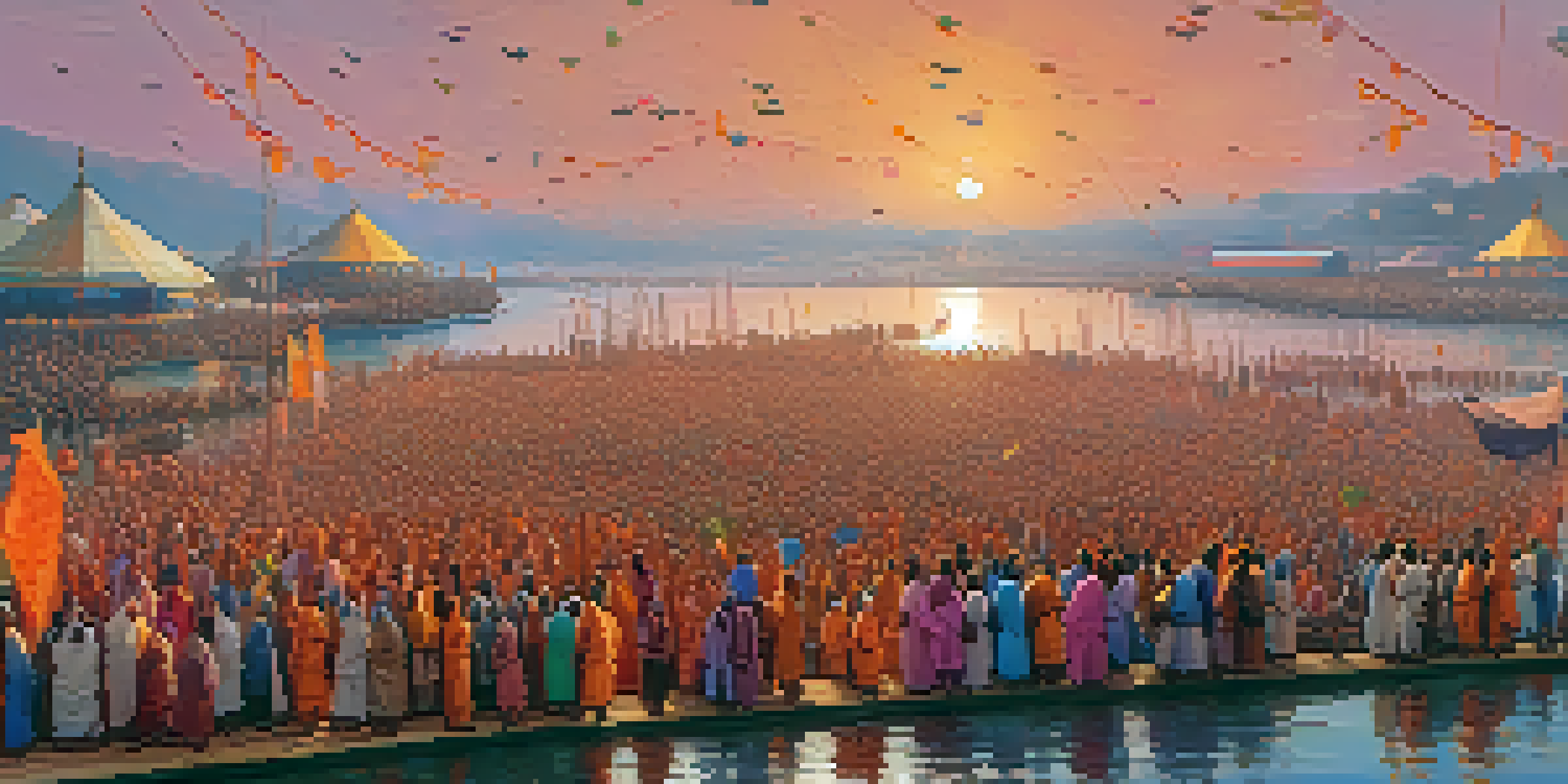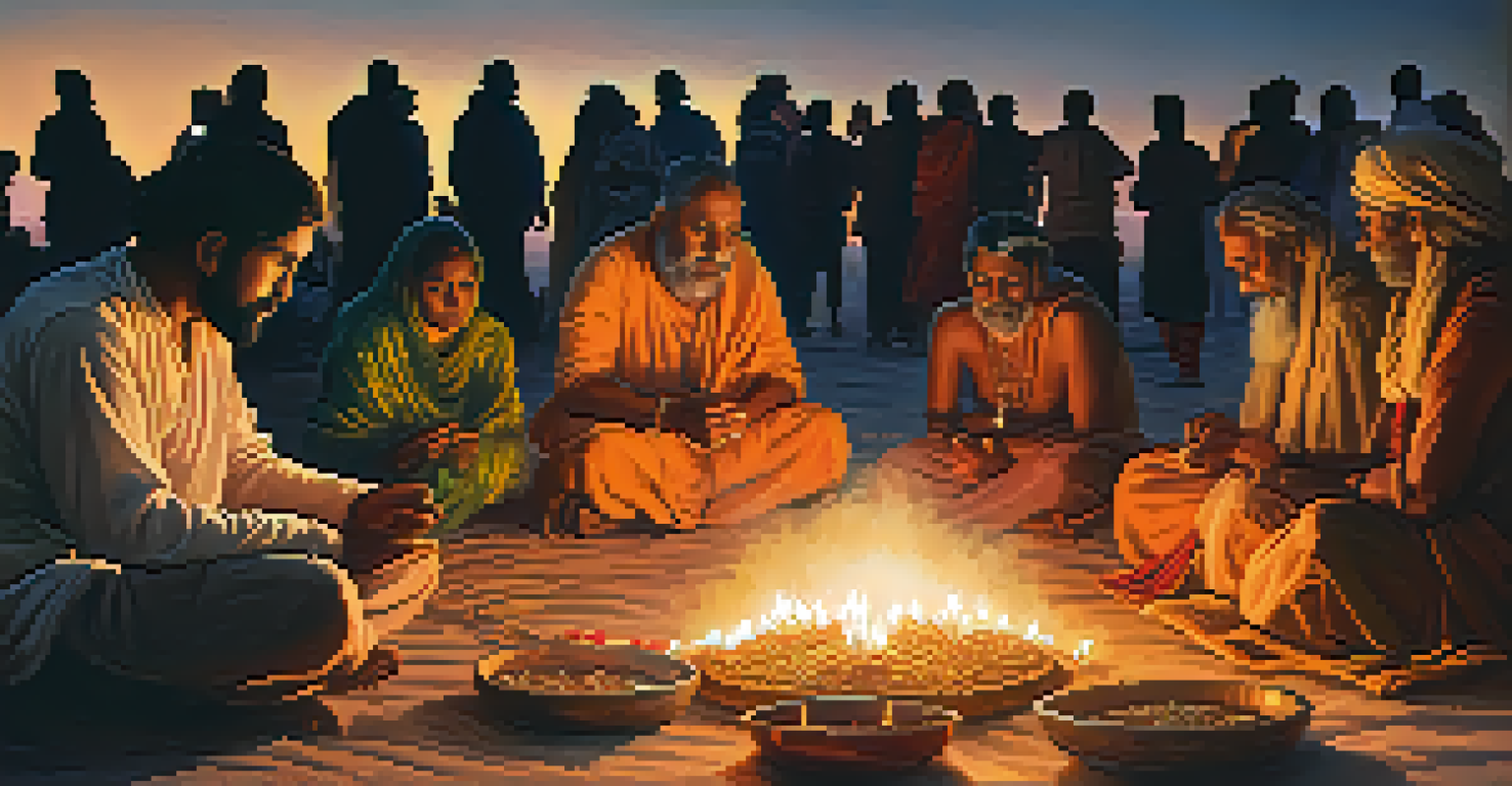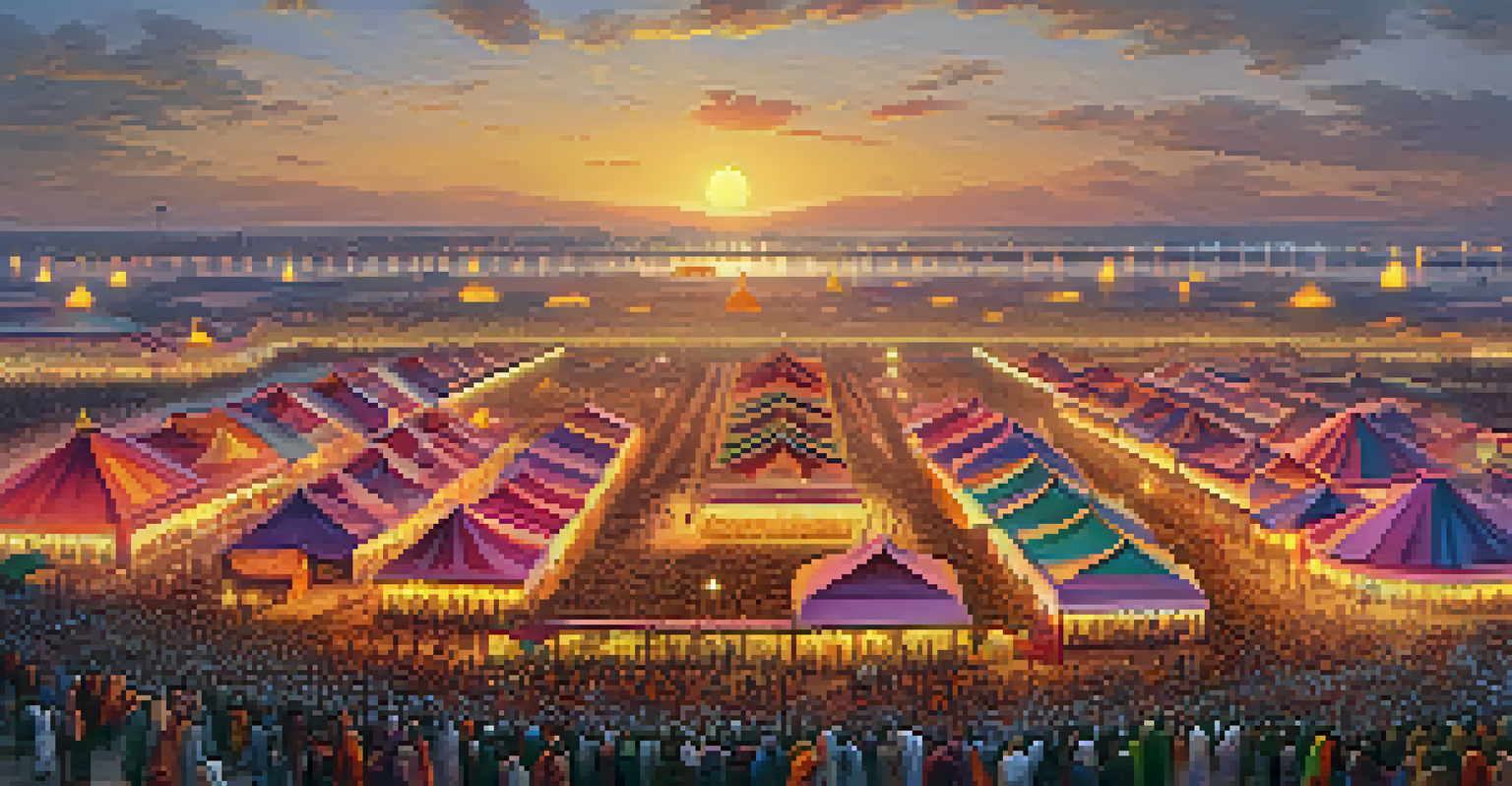The Spiritual Journey of the Kumbh Mela in India

Understanding Kumbh Mela: An Overview of Its Significance
Kumbh Mela, often described as the world's largest religious gathering, holds immense significance in Hinduism. This festival occurs every three years at rotating locations: Prayag, Haridwar, Ujjain, and Nashik. Each site is believed to be where divine nectar spilled during a cosmic battle, making it a sacred pilgrimage for millions. The event draws devotees from all walks of life, uniting them in a shared quest for spiritual awakening.
The greatest way to live with honor in this world is to be what we pretend to be.
The festival is not just a time for rituals; it's a vibrant showcase of faith, culture, and community. Pilgrims bathe in the holy rivers, believing it cleanses sins and grants liberation. This practice symbolizes a deeper, spiritual journey—one of purification and renewal. In essence, Kumbh Mela transforms ordinary moments into extraordinary spiritual experiences.
As people gather, the air buzzes with chants, prayers, and the scent of incense. The festival also serves as a platform for various spiritual leaders and saints to share their wisdom. This mingling of ideas fosters a sense of unity and collective consciousness, reinforcing the festival's role as a spiritual melting pot.
Historical Roots: The Origins of Kumbh Mela
The origins of Kumbh Mela trace back to ancient Hindu texts, specifically the Puranas, which narrate the tale of the churning of the ocean. In this myth, gods and demons worked together to extract 'amrit' or nectar of immortality. As they battled for possession, drops of this nectar spilled on Earth at the four locations of the Kumbh Mela, marking them as sacred.

This historical backdrop adds layers of depth to the festival, intertwining mythology with spirituality. The Kumbh Mela has evolved over centuries, adapting to various cultural and societal changes while retaining its core essence. Every gathering is a reminder of the timeless human quest for meaning and connection to the divine.
Kumbh Mela: A Spiritual Gathering
This festival unites millions in a shared quest for spiritual awakening, showcasing the essence of community and faith.
The festival has survived the test of time, with each iteration drawing even larger crowds. Its significance has transcended mere ritual, becoming a key part of India's cultural heritage. In this way, Kumbh Mela continues to inspire spiritual seekers and casual observers alike.
Rituals and Practices: The Heart of Kumbh Mela
At the heart of Kumbh Mela are the rituals that encapsulate the spiritual essence of the festival. The most notable among these is the holy dip in the sacred rivers, believed to cleanse away sins. This act of bathing isn't just physical; it symbolizes a deeper spiritual cleansing, offering devotees a chance to renew their faith.
Spirituality is not about being fixed or being perfect. It's about being whole and being real.
Beyond bathing, the festival features a variety of rituals, including prayer offerings, chanting, and meditative practices. Many participants also engage in penance and fasting, fostering a sense of devotion and focus. Each ritual, while distinct, contributes to the overarching theme of purification and spiritual growth.
The vibrant atmosphere is further enhanced by processions of sadhus (holy men) who showcase their unique lifestyles and philosophies. Their presence adds an air of mysticism and reverence, reminding everyone of the diverse paths within spiritual practice. Together, these rituals create an immersive experience that resonates deeply with all participants.
The Role of Community: A Collective Spiritual Experience
Kumbh Mela is not just about individual spirituality; it embodies the essence of community and togetherness. As millions converge, they form a tapestry of shared faith and aspirations. This gathering fosters connections among people from diverse backgrounds, creating a unique bond that transcends societal barriers.
The shared experience of participating in rituals, sharing stories, and offering prayers cultivates a sense of belonging. Many pilgrims travel with families or groups, reinforcing the idea that spirituality is often best experienced in community. This collective journey enhances the overall spiritual impact of the festival, making it a memorable event.
Historical and Cultural Significance
Kumbh Mela's roots in ancient mythology and its evolution over time underscore its importance in India's cultural heritage.
Moreover, the festival acts as a platform for cultural exchange, where participants share not just faith but also traditions and practices. This interaction enriches the experience, allowing individuals to learn from one another while deepening their understanding of spirituality. Ultimately, Kumbh Mela becomes a celebration of humanity and unity.
The Impact of Kumbh Mela on Spirituality Today
In today's fast-paced world, Kumbh Mela offers a refreshing reminder of the importance of spirituality. It encourages individuals to step back from their daily routines and reflect on their inner selves. Many attendees find that this experience reignites their spiritual journey, prompting them to explore deeper meanings in life.
The festival's massive scale also highlights the evolving nature of spirituality, as it adapts to modern influences while retaining its traditional roots. New-age practices, like mindfulness and yoga, often intertwine with the rituals at Kumbh Mela, attracting a younger demographic eager to connect with their spiritual side. This blend of old and new creates a dynamic environment for exploration.
Moreover, the festival has garnered international attention, drawing visitors from around the globe. This exposure fosters a greater appreciation for India's spiritual heritage and encourages cross-cultural conversations about faith and spirituality. Through Kumbh Mela, the message of unity and peace resonates far beyond its immediate setting.
Challenges and Adaptations: Kumbh Mela in Modern Times
While Kumbh Mela is a time of celebration and spirituality, it also faces challenges, particularly in the modern context. With the influx of millions of pilgrims, managing logistics and ensuring safety can be daunting. Organizers work tirelessly to create a framework that accommodates the massive crowds while preserving the sanctity of the event.
In recent years, the impact of globalization and technology has also reshaped the festival. Social media plays a significant role in how people experience and share their journey at Kumbh Mela. Many choose to document their experiences, creating a virtual connection that complements their physical presence. This integration of technology offers new avenues for engagement but also raises questions about maintaining the festival's spiritual essence.
Adapting to Modern Challenges
As Kumbh Mela faces modern logistical and environmental challenges, it seeks to balance tradition with contemporary practices.
Moreover, environmental concerns have prompted a shift towards sustainable practices at the festival. Efforts are being made to minimize waste and ensure the preservation of sacred sites. These adaptations signify a growing awareness of our responsibility towards nature and the spiritual spaces we cherish.
The Future of Kumbh Mela: Preserving Spiritual Heritage
As we look towards the future, the Kumbh Mela stands at a crossroads, balancing tradition with modernity. Preserving the spiritual heritage of the festival is crucial for maintaining its significance. Ensuring that future generations can experience the profound spiritual journey it offers requires a commitment to thoughtful stewardship.
Education plays a vital role in this preservation. By informing younger generations about the historical and cultural significance of Kumbh Mela, we can inspire them to engage with and uphold these traditions. Workshops, community programs, and digital storytelling can bridge the gap between generations, ensuring that the essence of Kumbh Mela continues to thrive.

Ultimately, the future of Kumbh Mela lies in its ability to adapt while remaining true to its roots. By embracing change and fostering a spirit of inclusivity, the festival can continue to be a beacon of hope and spiritual rejuvenation for millions around the world. The journey of Kumbh Mela is far from over; it is a living testament to humanity's enduring quest for connection and meaning.